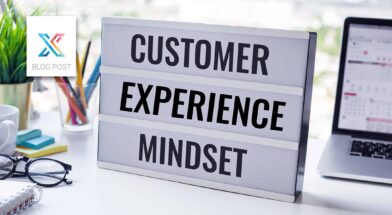Employee burnout is a significant issue that can negatively impact productivity and morale. Client feedback can help identify workload issues and areas where employees might be struggling. For example, if clients frequently mention delays or quality issues, it could indicate that your team is overworked or lacks the necessary resources.
One national firm had a hiring freeze in place but saw “responsiveness” scores slipping for one office. The client data provided the insight to confirm the office manager’s reports that they were overworked and desperately needed help. Leadership used this insight to create an exception and add staff to this location, resulting in prompt improvement in client sentiment and reduced burnout for the staff.
Client feedback also helps identify when teams are going too far “above and beyond.” While exceeding expectations is commendable, substantial over-delivery is often unnecessary and can erode margins. The average professional services firm spends 6% of direct labor hours on "waste" — intended value adders that can be removed while still satisfying the client. Helping staff recognize when and where they’re overdelivering provides a relief valve, reducing burnout and improving morale.
Address these issues by redistributing workloads, providing additional support, or implementing process improvements. Regularly check in with employees to gather their feedback and ensure they have the tools and support they need to succeed. By proactively addressing burnout, you create a healthier work environment and improve overall productivity.
Matching Employees with Suitable Clients
Client feedback can also help match employees with clients who are the best fit for their skills and working style. If a particular employee receives positive feedback from certain types of clients, consider assigning them to similar clients in the future. This not only enhances client satisfaction but also ensures that employees feel confident and fulfilled in their roles.
Benefits of Matching Employees with Suitable Clients:
- Higher Job Satisfaction: Employees work with clients they connect with best.
- Increased Efficiency: Teams perform better when working with clients they understand.
- Stronger Client Relationships: Long-term partnerships are built on mutual satisfaction.
By leveraging customer feedback software, businesses can analyze trends and make data-driven decisions to optimize client-employee pairings.
Attracting and Retaining Top Talent
Positive client feedback can be a powerful tool for attracting and retaining top talent. Use client testimonials and success stories to showcase the impact your team has on clients. Highlight these stories in recruitment materials, job postings, and during interviews to demonstrate the value and satisfaction that come from working with your company.
Using client feedback to attract and retain the best clients also creates a magnet for attracting and retaining talent. Employees prefer to work for appreciative clients and on fulfilling projects. Employee retention starts by curating a portfolio of great clients and projects that challenge and engage staff.
Strategies for Leveraging Client Feedback for Talent Acquisition:
- Showcase Client Testimonials: Feature success stories on career pages and recruitment materials.
- Recognize Employee Contributions: Share positive client feedback internally to boost morale.
- Promote Company Culture: Highlight a work environment that values feedback and continuous improvement.
Additionally, sharing positive feedback with your team reinforces their sense of purpose and appreciation. Employees who feel valued and recognized are more likely to stay with your company and contribute to its success.
Conclusion
Leveraging client feedback to improve employee relations can lead to a more motivated and productive workforce. By addressing burnout, matching employees with suitable clients, and using positive feedback to attract and retain talent, you create a supportive and fulfilling work environment.
The key to successful employee relations is actively listening to feedback, implementing meaningful changes, and fostering a culture of continuous improvement. A business that values both its clients and employees will ultimately see stronger performance, higher retention, and greater overall success.
The takeaway? Happy employees = Happy clients = Stronger business growth. Ready to unlock the full potential of client feedback? 🚀
Stay tuned for the next installment in our Value Creation blog series, where we’ll dive deeper into the powerful concepts outlined in our eBook, Nine Ways to Create Value with Feedback. Each post will unpack actionable strategies to help you transform client feedback into measurable success.





